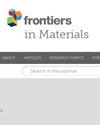Influence of preparation parameters on rheological properties and relation analysis of waste rubber modified bitumen mastic
IF 2.6
4区 材料科学
Q3 MATERIALS SCIENCE, MULTIDISCIPLINARY
引用次数: 0
Abstract
Waste rubber modified bitumen has gained significant attention as a sustainable and innovative material in the field of pavement engineering. This study aims to evaluate the performance of rubber modified bitumen mastic by considering its rheological properties, specifically focusing on preparation parameters, i.e., rubber content, mesh number, and filler to bitumen ratio. From the experimental results, the rheological properties of rubber modified bitumen mastic were significantly influenced by preparation parameters. Increasing the rubber powder content in bitumen mastic results in higher viscosity. Increasing the rubber content improves high-temperature rutting resistance to a certain extent, however, excessive rubber powder content would result in weakened high-temperature performance improvement. The rutting factor decreases gradually with an increase in the rubber mesh number. A ratio of filler to bitumen of 0.95 exhibits the best resistance to rutting at high temperatures. Higher rubber content and larger mesh number correspond to stronger low-temperature crack resistance in bitumen mastic. As the ratio of filler to bitumen increases, the low-temperature deformation capacity gradually decreases, resulting in weaker low-temperature crack resistance. Based on the grey relation analysis, the ratio of filler to bitumen has the greatest impact on the high and low-temperature rheological properties of bitumen mastic, followed by the rubber content. The rubber mesh number has a relatively lower impact. It is crucial to control the ratio of filler to bitumen to avoid excessive values. When possible, a higher rubber powder content should be used while meeting process requirements. These findings provide valuable insights into the design and optimization of rubber modified bitumen mastic, which can contribute to the development of sustainable and high-performance bitumen mixtures, promoting the use of recycled rubber in pavement engineering.制备参数对废橡胶改性沥青胶泥流变特性的影响及关系分析
废橡胶改性沥青作为一种可持续的创新材料,在路面工程领域受到了广泛关注。本研究旨在通过考虑橡胶改性沥青胶泥的流变特性来评估其性能,特别关注制备参数,即橡胶含量、目数和填料与沥青的比例。从实验结果来看,橡胶改性沥青胶泥的流变性能受到制备参数的显著影响。增加沥青胶泥中的橡胶粉含量可提高粘度。增加橡胶含量可在一定程度上改善高温抗车辙性能,但过高的橡胶粉含量会削弱高温性能的改善。随着橡胶目数的增加,车辙系数逐渐降低。填料与沥青的比率为 0.95 时,高温下的抗车辙性能最好。橡胶含量越高,网目数越大,沥青胶泥的低温抗裂性就越强。随着填料与沥青比例的增加,低温变形能力逐渐减小,导致低温抗裂性减弱。根据灰色关系分析,填料与沥青的比例对沥青胶泥高低温流变性能的影响最大,其次是橡胶含量。橡胶目数的影响相对较小。控制填料与沥青的比例以避免过高的数值至关重要。在可能的情况下,应在满足工艺要求的前提下使用较高的橡胶粉含量。这些发现为橡胶改性沥青胶泥的设计和优化提供了有价值的见解,有助于开发可持续的高性能沥青混合物,促进再生橡胶在路面工程中的使用。
本文章由计算机程序翻译,如有差异,请以英文原文为准。
求助全文
约1分钟内获得全文
求助全文
来源期刊

Frontiers in Materials
Materials Science-Materials Science (miscellaneous)
CiteScore
4.80
自引率
6.20%
发文量
749
审稿时长
12 weeks
期刊介绍:
Frontiers in Materials is a high visibility journal publishing rigorously peer-reviewed research across the entire breadth of materials science and engineering. This interdisciplinary open-access journal is at the forefront of disseminating and communicating scientific knowledge and impactful discoveries to researchers across academia and industry, and the public worldwide.
Founded upon a research community driven approach, this Journal provides a balanced and comprehensive offering of Specialty Sections, each of which has a dedicated Editorial Board of leading experts in the respective field.
 求助内容:
求助内容: 应助结果提醒方式:
应助结果提醒方式:


